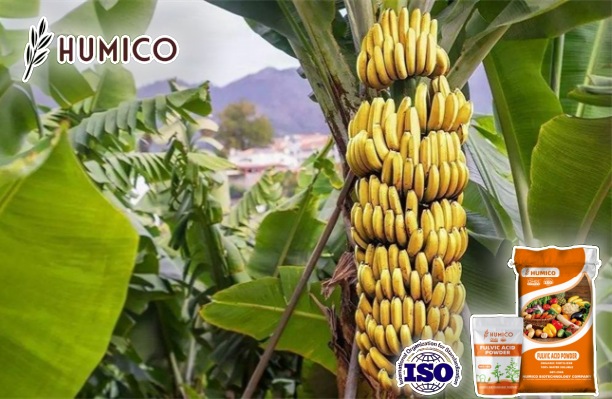Fulvic acid is a water-soluble, reddish-brown or gray-black powdery substance. It plays a significant role in promoting plant growth and combating drought. It enhances the plant’s ability to resist adverse conditions, increases yield, and improves quality. It is mainly applied to crops such as wheat, corn, sweet potatoes, millet, rice, cotton, peanuts, rapeseed, tobacco, silkworm mulberry, melons, ginger and vegetables.
Uses in Agriculture
Fulvic acid fertilizer promotes plant growth and can appropriately control the degree of stomatal opening on crop leaves, reducing transpiration and playing a significant role in combating drought. It enhances resilience, increases yield, and improves quality. It can be mixed with some non-alkaline pesticides and often has a synergistic effect.
As a Plant Growth Regulator: Fulvic acid acts as a chelating agent, binding to minerals and nutrients in the soil. This enhances the availability of nutrients to plants, improving their overall health and growth.
For Crop Spraying: Used for crop spraying to resist drought and hot dry winds. For example, when sprayed on wheat leaves, the average stomatal opening can be reduced by about two-thirds. It also enhances root system vitality, prevents premature aging, increases enzyme activity, and raises chlorophyll content by over 20%.
For Economic Crops: When sprayed on the leaves of apples, grapes, peanuts, watermelons, vegetables, and tea, it can increase sugar content by 2-4 degrees, reduce acidity, and increase Vitamin C, thus improving fruit quality. For cotton, it can prevent yellow wilt disease and increase cotton yield by 15-30%.

Structural Features
Elemental Composition: Carbon (C) 54.82%, Hydrogen (H) 2.29%, Oxygen (O) 41.14%, Nitrogen (N) 0.66%, Sulfur (S) 1.09%.
Product Quality Standards
Fulvic acid is a solid that is brown or gray-black in color, has a sour taste, is odorless, and is easily soluble in water, ethanol, dilute acids, dilute alkalis, and aqueous acetone.
- Fulvic Acid Content: ≥95%
- 10% Aqueous Solution pH: 2.5—3
- Heavy Metals: <20 PPM
- Arsenic Salts: <2 PPM
- E4∥E6 Ratio: Between 10—15
Preparation or Sourcing Methods
Ion Exchange Method: A reactor is pre-filled with water and regenerated hydrogen-type strong acid ion exchange resin. Powdered weathered coal, ground to below 100 mesh, is added. After the reaction, the output is discharged into a sedimentation tank to allow coal slag and resin to settle. The upper layer containing the fulvic acid water solution is further de-ashed through centrifugation, concentrated in an evaporator, and then dried in a spray dryer to obtain the final product.
Sulfuric Acid-Acetone Method: Weathered coal of 40-60 mesh and acetone with 10-20% water content are added to a reaction tank in a specific ratio. Concentrated sulfuric acid is gradually added under stirring to facilitate the dissolution of fulvic acid into the solvent. After the reaction, the material is discharged into a sedimentation tank and allowed to naturally settle for 8 hours. The clarified extract is transferred to a jacketed heating evaporator to evaporate most of the solvent. The concentrate is then poured into a shallow tray and dried in an oven to obtain the product.
Packaging and Storage
The product is packaged in fiber woven bags lined with plastic film. For storage and transportation, ensure a dry and well-ventilated environment.
Conclusion
Fulvic acid fertilizer offers a range of benefits for both soil health and plant growth. Its ability to enhance nutrient absorption, improve soil structure, and increase crop yield makes it an invaluable resource for sustainable agriculture.



